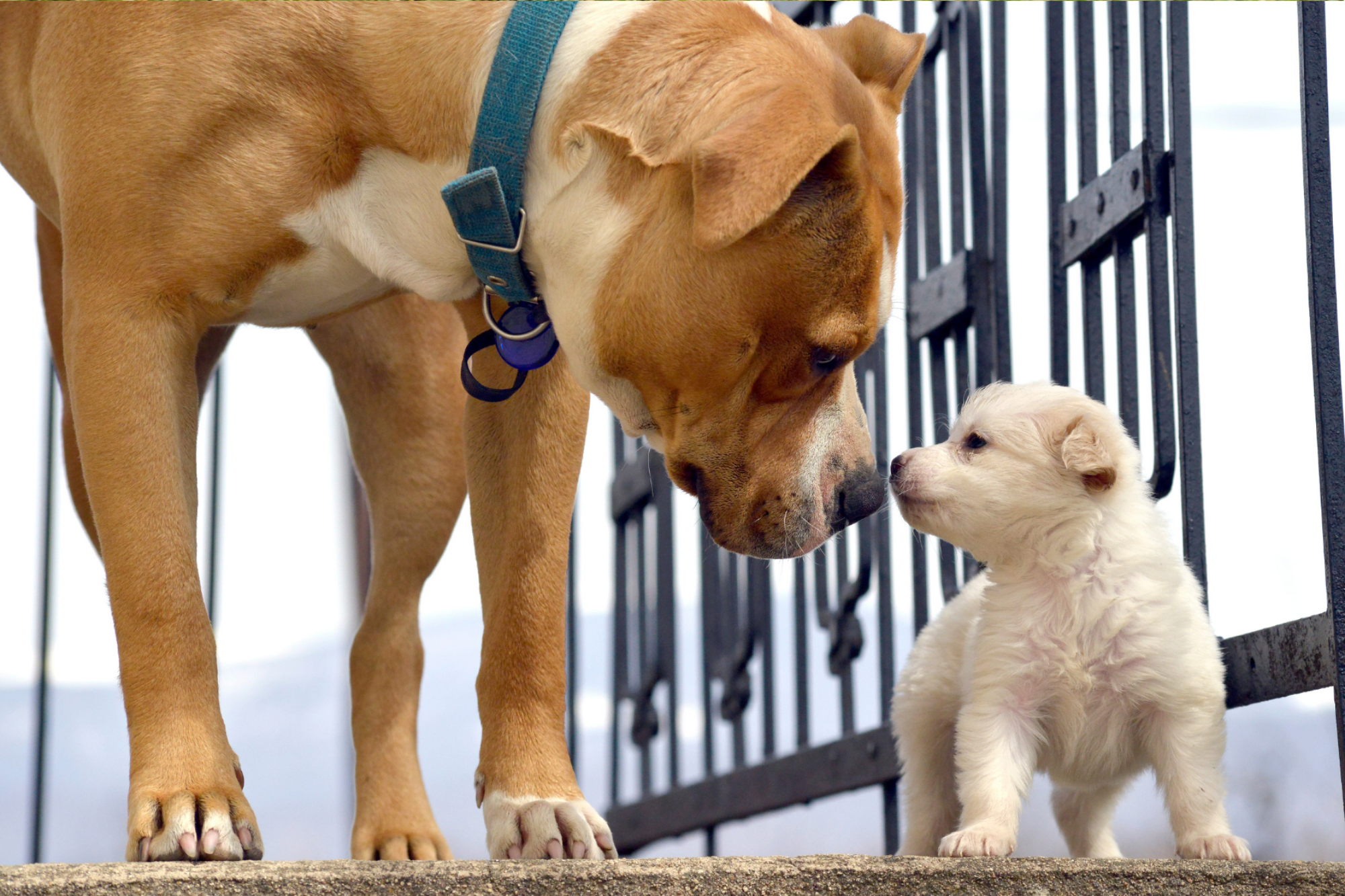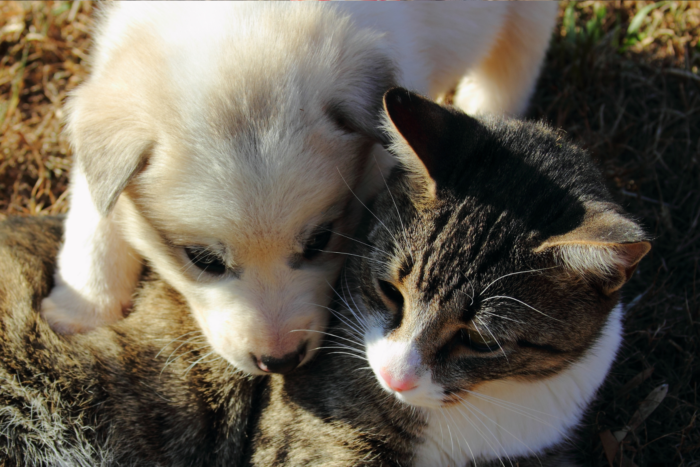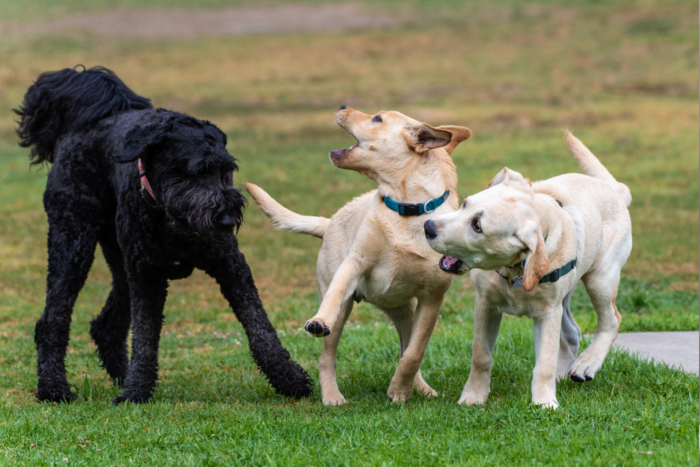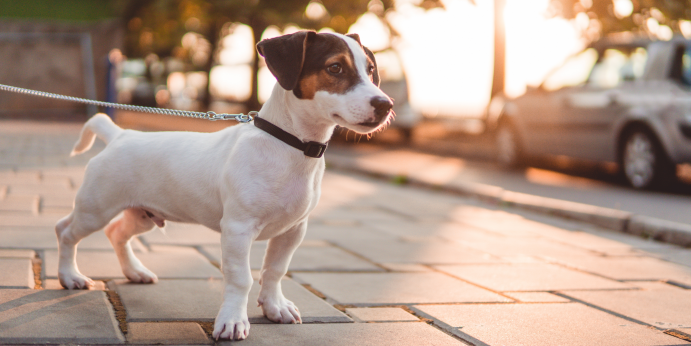Puppy socialisation – how to start and get it right?
Puppy socialisation fundamentals
You might have heard that there is a critical period of puppy socialisation and that the window closes at around 16 weeks. It’s the period where the associations are formed rapidly. During this time your puppy learns at a fast pace and the avoidance behaviours and fear responses are less likely. Some people say that we need to be quick and give the puppy as many new experiences as we possibly can before the puppy turns 16 weeks. Yet, rushing things through is rarely good advice. In the reality, socialisation is a life-long process and your puppy will be learning throughout his whole life.
A lot of the work can already be done by the breeder
And that’s why it’s so important to check how your puppy lives at the breeder and what kind of experiences he has there. If your puppy was born in a village with no traffic, you might have more work in carefully exposing him to city life. If your pup was born in the city and never was taken to the countryside, he can freak out if he sees sheep, cows or horses. Many factors will influence your puppy’s reaction to a new person, animal or object. Those factors include (but are not limited to) breed, age, genes, early socialisation at the breeder and experiences. There is no one-size-fits-all. One puppy couldn’t care less about a skateboard, the other would be scared and run away from it and another would try to chase it and bite it. You can also have a different outcome in mind. You might like the puppy to be brave and approach a skateboard or even want to teach the puppy to sit on it or ride it! Another person would like the puppy to stay calmly in the presence of a skateboard, look at it but without approaching it or running away from it.
How can the socialisation process look like? Take it slow and build positive experiences.
Socialisation should not be merely about exposure! It’s the quality of the interaction that counts not the number of them! Forcing your puppy to meet as many new people and dogs as he can, can easily backfire if it’s not done carefully. Let your puppy approach this new person or a dog and allow him to retreat if he wants to. Giving him choice is far more empowering and confidence-building than forcing more interactions on him. I’ve seen people dragging their puppies to meet another dog or a child thinking that the pup will just go over their fear. Yet, if the puppy’s behaviour doesn’t serve its function, he can learn to escalate. As Chirag Patel is saying “listen to the whispers, so they don’t need to shout”. How will the whispers look like? The most visible one is moving away from the person, dog or a thing we want to introduce our puppy to. If the puppy stays back or actively moves away – it’s a sign of discomfort. Letting your puppy move away doesn’t make him more anxious! To the contrary! It’s far better to let him overcome this fear by approaching the new thing in his own time.
Your puppy has the right to say “no, thank you!”
We sometimes believe that puppies need to be friendly to everyone but that’s not true! We don’t demand from each other to be friendly to everyone, let’s not demand it from dogs. We want a social dog but if he doesn’t care about meeting new people that’s a good thing too! People who have dogs that are friendly to everyone and want to greet everyone can testify that it’s not all great! Can you imagine how the walk looks like if the puppy wants to greet everyone he meets? It’s great if they can ignore people too.
We should redefine what a socialised dog looks like
It’s not just a dog who approaches everyone and allows everyone to pet him. Those dogs exist but it’s not the norm. Some dogs display aggressive behaviours towards people or dogs and of course, we would like to avoid that. There are also many dogs somewhere in the middle who can greet someone briefly and go their own way as well as ignore someone completely and it doesn’t make them under socialised! It’s good to have a dog who can ignore people as it’s far more likely he will pay attention to you and you will have it easier to do some training with him. It’s not always easy to keep it that way as people will approach your puppy and most of them will completely ignore his whispers. Be a voice for your pup and offer him a way out of the situation. If your puppy is already approaching and greeting everyone and getting all excited, there is nothing wrong with that! I would encourage you to start teaching him to focus on you more. Even the most sociable pup can learn to ignore a new person and stay with his human.
Be the voice of your pup and the most exciting thing in his life and you will have an incredible companion for life.
Raising a puppy is filled with a lot of joy and cuteness but also an equal amount of frustration! Even professional dog trainers with the new puppy have days when they question their decision to get one in the first place! The path to raising a puppy is not easy! That’s why it’s best to do it with others who understand you. [CLICK HERE FOR MORE KNOWLEDGE]
See also other posts:
June 30, 2023
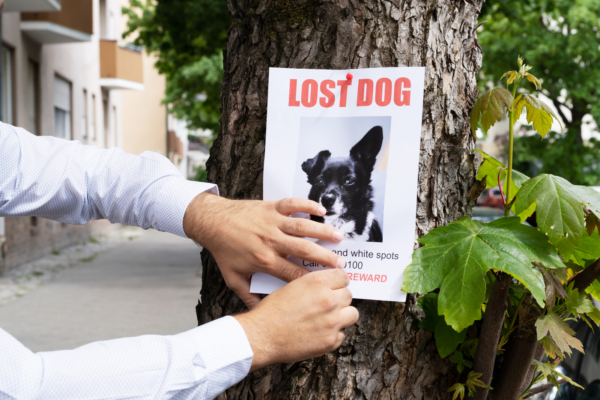
Get Your Lost Dog Back Home Quickly: Follow These 12 Tips for Success
Vacations favor more frequent and longer walks with our furry friends. We travel, visit new places. Summer makes us loosen our brakes and allow our…
June 30, 2023
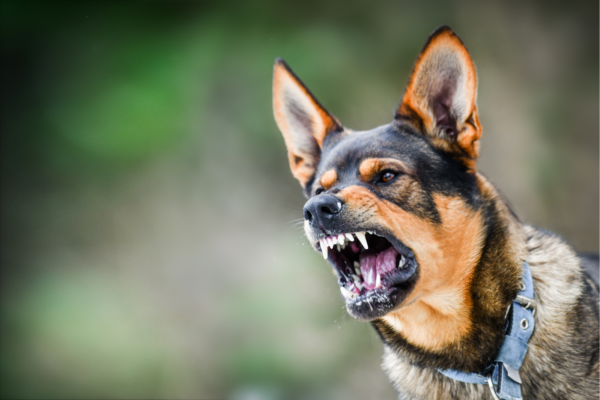
Managing Aggressive Dog Behavior: Tips for Peaceful Living
Living with an aggressive dog may seem challenging, but it can be peaceful and manageable with the right approach. One key aspect is to remain…
June 30, 2023
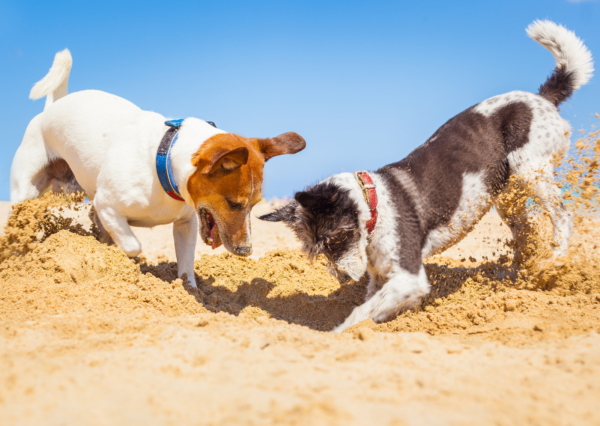
Unlocking the Secret to Successful Puppy Socialization: Quality over Quantity
Today, although the topic is very important, I will keep it brief. Socialization is a topic that could fill books or scientific papers. However, today…

